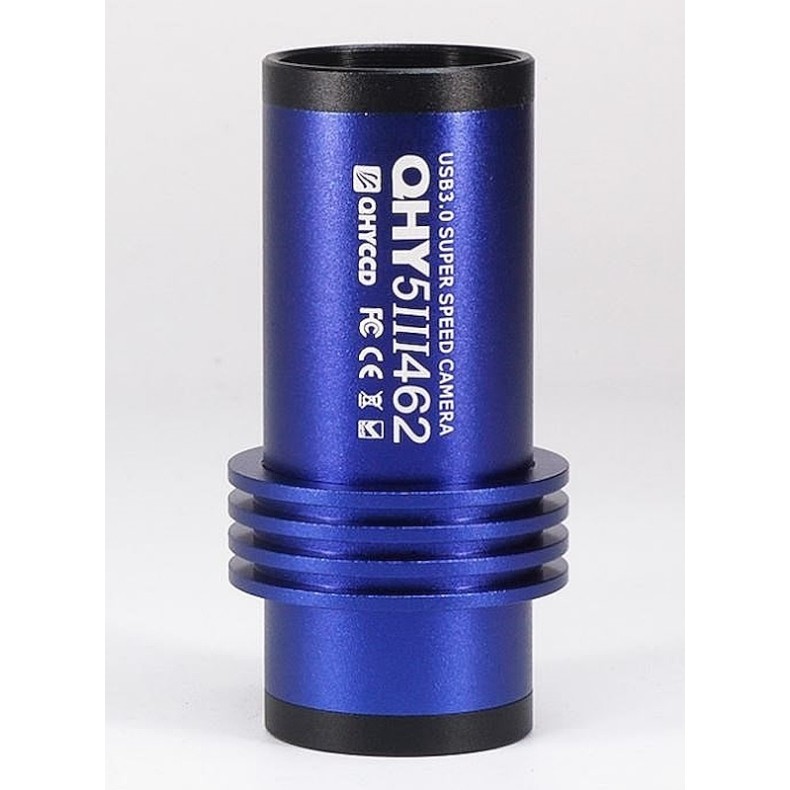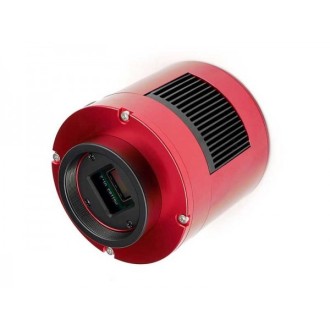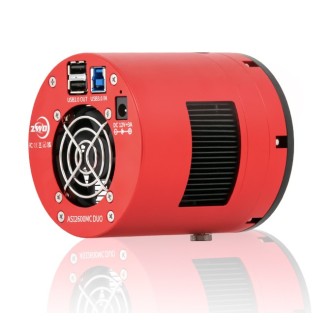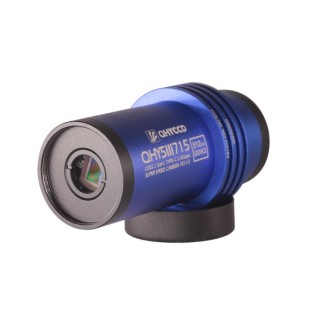QHY CMOS camera model QHY5III462M monochrome
The first affordable near infrared camera for amateur astronomy. Monochrome version.
| Carrier | Description | Estimated Delivery | ||
|---|---|---|---|---|
 |
Home delivery - International | Home delivery - International |
Friday, 23 May - Friday, 30 May |
|

Home delivery - International
Home delivery - International
Estimated delivery:
Friday, 23 May - Friday, 30 May
The QHY5III462 camera uses Sony's 6th generation 2.1 megapixel IMX462 STARVIS CMOS sensor. The pixel size is 2.9u, making it the same size and resolution as the sensor used in the QHY5III290 camera that has been used so successfully for planetary imaging by some of the world's top planetary astrophotographers. Like other 5III series cameras, the QHY5III462 is powered and controlled by USB 3.0. No additional power is required.
The IMX462 sensor is back-illuminated and incorporates new technology that gives it a significant advantage over other planetary cameras: first, the IMX462 sensor has sHCG (Super High Conversion Gain) for very low read noise with high gain. This is ideal for stacking hundreds or thousands of short planetary images. Second, it is exceptionally sensitive in the NIR.
In this latest generation of sensors, the photodiode part of the pixel well is physically deeper than in previous Sony BSI sensors, allowing longer wavelength photons to penetrate deeper into the substrate. This dramatically increases the sensor's sensitivity to red and near-infrared (NIR) light. The RGB filters on the pixels become transparent at NIR wavelengths, so the sensor exhibits nearly equal peak sensitivity to NIR light as to light in the visible spectrum.
The peak QE in the NIR around 800 nm is as high as the peak QE at visible wavelengths. For planetary imagers using a methane filter that lets light around 880nm through, this is very good news.
BSI
One of the advantages of the back-illuminated CMOS structure is the improved overall well capacity. In a typical front-illuminated sensor, photons from the target entering the photosensitive layer of the sensor must first pass through metal wiring that is embedded just above the photosensitive layer. The wiring structure reflects some photons and reduces the efficiency of the sensor.
In the back-illuminated sensor, light is allowed to enter the photosensitive surface from the reverse side. In this case, the sensor's integrated wiring structure is below the photosensitive layer. As a result, more incoming photons hit the photosensitive layer and more electrons are generated and captured in the pixel well. This ratio of photon to electron production is called quantum efficiency. The higher the quantum efficiency, the more efficient the sensor is at converting photons to electrons and, therefore, the more sensitive the sensor is at capturing an image of something dark.

Extended red and near-infrared sensitivity
Logically, one would think that each generation of Exmor sensors would build on and incorporate all the improvements of the immediately preceding generation. However, this was not the case with the fifth-generation Exmor R sensors.
The early back-illuminated sensors used shallower pixel wells (like the third-generation front-illuminated designs) than the physically deeper pixels of the fourth generation. So, while the back-illuminated structure increased sensitivity in the visible range by 2X, the shallower pixels did not improve the NIR. The answer to this is seen in the latest sixth generation Sony Exmor R sensors, such as the IMX462. The use of physically deeper pixels with the back-illuminated structure has dramatically improved the sensor's sensitivity to visible and near-infrared wavelengths.

sHCG Mode (Super High Conversion Gain)
Another advantage of the QHY5III462 is the camera's "Super High Conversion Gain" capability. By using a lower capacitance, a small amount of charge can be converted to a high voltage, resulting in higher sensitivity in low light conditions.
the read noise of the QHY5III462 in high gain mode is as low as 0.5 electrons!
QHYCCD's Dr. Qiu compared the signal-to-noise ratio of the new IMX462 with the highly sensitive IMX385, a fifth-generation device.
"I know that IMX385 is 0.13. And we need to get rid of the image area factor to compare them. The 462 is 2.9um x 2.9um. The 385 is 3.75um x 3.75um The area ratio is 1.67 times. If we convert the 462 size to 385, it is 0.10. So it looks like it is better than 0.13. In other words, the 462 has better SNR at the same pixel size."
The following test exposures demonstrate the low-light improvement over the IMX290 sensor. The QHY5III462C image is on the left and the corresponding QHY5III290C image is on the right. The low light conditions and exposures are identical for each top and bottom image pair and a UV/IR filter was placed for each camera. Therefore, this test demonstrates the increased sensitivity and SNR of the QHY5III462C over the QHY5III290 under the same conditions in the visual light spectrum only.
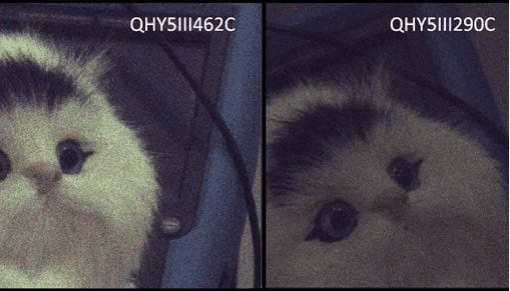
Color and Mono imaging with only one camera
The filter array in the IMX462 uses organic dye filters. These filters are very efficient at visible wavelengths, but become completely transparent in the NIR. For this reason, good RGB color balance requires an external UV/IR filter that blocks the NIR wavelengths.
Many color cameras integrate this UV/IR filter in the camera or in the optical window to obtain normal color images. However, to take full advantage of the 462C sensor's capabilities, in the QHY5III462C camera, the optical window is AR coated only with no UV or IR blocking and includes two 1.25″ screw-in filters . A UV/IR cut-off filter to isolate visible wavelengths for normal RGB imaging and an IR850 filter that will cut visible wavelengths but will pass wavelengths above 850 nm.
The following image was takenwith the QHY5III462C and IR850 infrared pass filter:
Technical Specifications:
- QHY5III462 (Color and Mono, near infrared enhanced)
- Pixel Size 2.9um x 2.9um
- Sensor: SONY IMX462 CMOS: 2.9um x 2.9um pixel size
- Pixels: 1920 x 1080
- Effective Pixels: 2 Megapixels
- Fullwell: 12000e-
- Reading noise: 0.5e-
- AD depth: 12-bit (16-bit and 8-bit output)
- Sensor size: 1/2.8 inch
- Capture rate: Full resolution 135 FPS@8-bits (USB3.0)
- ROI capture speed: Higher speeds in selected areas (any ROI supported)
- Exposure times: 7us-900s
- Shutter: Electronic
- Telescope connection: USB 3.0
- Guide port: yes
- Telescope connection 1.25
- Optical window type: 1.25" interchangeable filter as optical window (1.25" UV/IR cut filter and 1.25" IR850 filter included)
- Backfocus: 12mm
- Weight: 88g

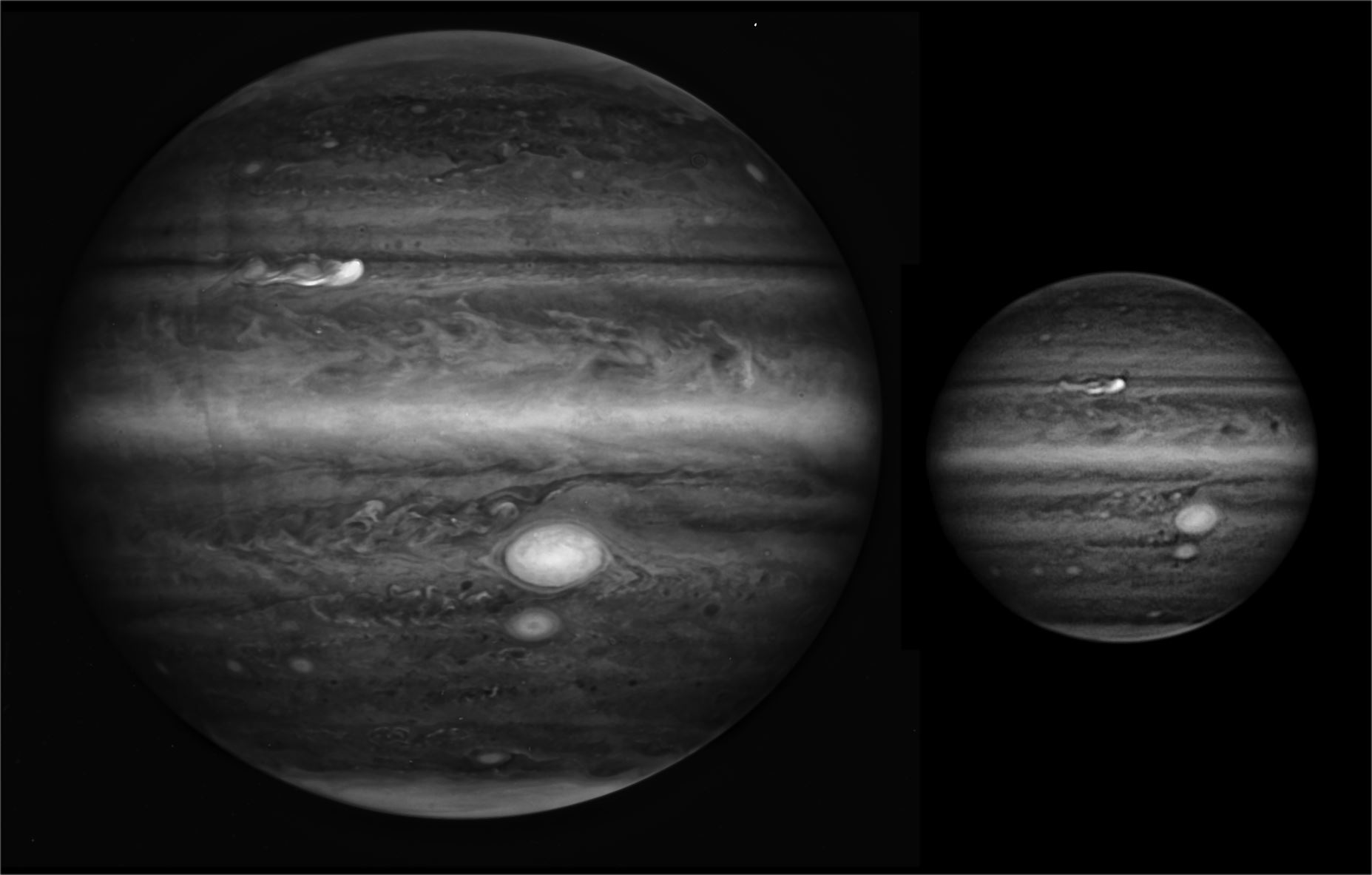
Jupiter - Methane. Comparison of a Hubble image of methane (left) taken a few hours earlier than Christoher Go's C-14 image (right).

by Jarrett Trezzo

by Christopher Go
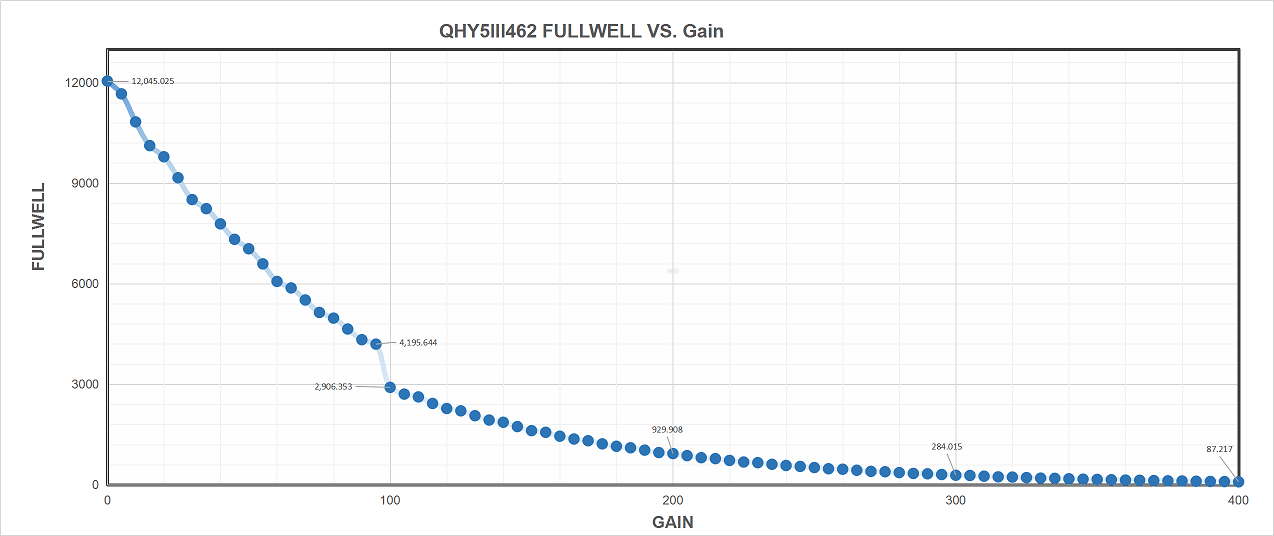


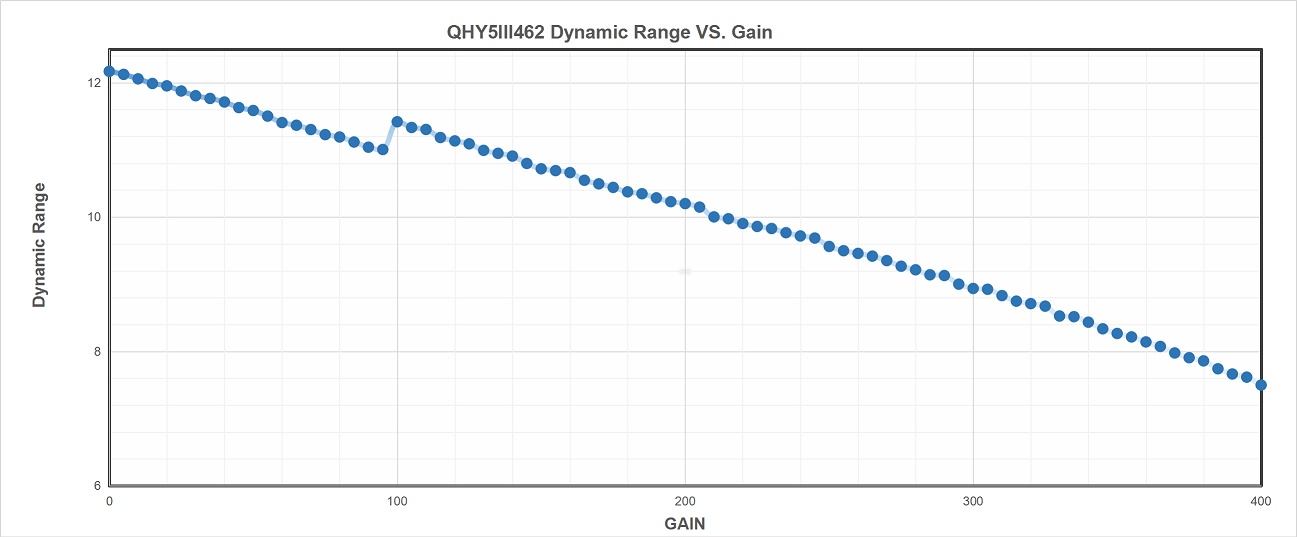
Mechanical dimensions

Accessories


